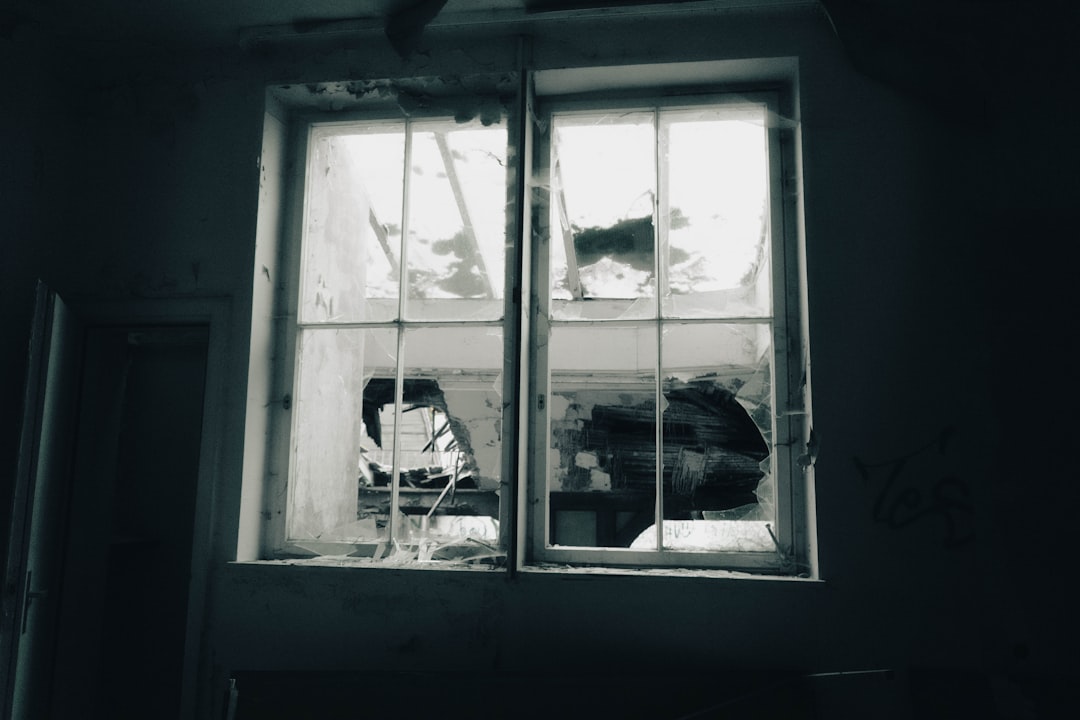

Engage prospects with a scan and streamline customer engagement with FREE QR code marketing tools by Sona – no strings attached!
Create a Free QR CodeFree consultation

No commitment

Engage prospects with a scan and streamline customer engagement with FREE QR code marketing tools by Sona – no strings attached!
Create a Free QR CodeFree consultation

No commitment
Storm window repair services operate in an environment defined by increasing customer expectations and a strong need for operational efficiency. Many providers still rely on traditional lead generation methods, such as printed brochures, outdated signage, and word-of-mouth referrals, that often fail to attract or track high-value prospects. This leads to missed opportunities as prospects research repair options anonymously and never enter the CRM, while homeowners and property managers seeking repairs want immediate answers about costs, availability, and service claims, often from their mobile devices. To improve digital acquisition, see these best practices for window and door companies.
These challenges highlight an ongoing transformation in the storm window repair industry. QR codes have emerged as a practical solution, bridging offline interactions with seamless digital engagement. Rather than waiting for prospects to fill out forms or call a hotline and risk losing a lead to competitors, modern QR code campaigns allow service providers to connect with potential customers at the exact moment of interest, turning attention into actionable inquiries. For a broader view of tactics, see QR codes in marketing.
By intentionally placing QR codes in real-world locations, from storm-damaged property signage to insurance partner mailers, storm window repair businesses can streamline appointment booking, deliver instant cost estimates, and efficiently capture leads. Beyond automating marketing, this integration unlocks valuable insights, showing which neighborhoods or campaigns drive the most qualified inquiries. For mail-based outreach, incorporate direct mail with trackable codes. Here is how QR codes can transform storm window repair for both businesses and customers.

Many storm window repair businesses struggle with analog processes that slow response times, obscure lead tracking, or create extra friction for customers trying to request help during high-stress, post-storm moments. Paper sign-in sheets, generic brochures, and static ads rarely yield insight into which prospects need urgent assistance. Valuable opportunities go untracked and unpursued when a homeowner sees a flyer, takes it home, and never calls.
Replacing these analog touchpoints with QR-enabled flows shortens the path from interest to action. A scan that opens a mobile-friendly estimator, a same-day booking calendar, or an insurance intake form captures both the lead and the context of their need. Staff can prioritize requests by urgency and location, while managers gain visibility into what is driving demand.
By integrating QR codes into daily operations, storm window repair businesses move from delayed, opaque lead capture to a real-time, measurable engagement engine. Customers get faster answers and easier access, while providers gain reliable data that supports staffing decisions, forecasting, and repeatable growth.

Persistent issues such as missing critical leads, lack of insight into which prospects are active, and time wasted on cold outreach have long limited growth for local window repair businesses. The work is urgent, seasonal, and often triggered by severe weather, so speed and clarity matter. QR codes address these challenges by making customer interactions traceable and actionable without adding friction for distressed homeowners. For added pipeline support, explore targeted window leads.
QR codes excel in the moments that define storm repair: fast triage, rapid scheduling, and clean documentation. They reduce uncertainty for customers who do not know where to start, while ensuring your operations team receives complete, structured information. From a single scan, you can orchestrate a journey that includes appointment booking, damage documentation, and follow-up communications without redundant data entry.
QR codes turn previously anonymous interactions into qualified, traceable opportunities. They give storm window repair providers the visibility needed to prioritize urgency, coordinate crews, and close revenue faster, all while improving the customer experience.

Not every scan should lead to the same destination. Matching QR code format to the customer’s situation improves outcomes and reduces friction. For storm window repair, the most effective formats deliver immediate value in a single tap while capturing the right data for follow-up.
Dynamic QR codes are ideal for this vertical because they allow you to update destinations and copy as conditions evolve. During high-demand periods, you can shift scans to a waitlist with proactive updates. During quieter weeks, you can direct them to promotional offers or seasonal maintenance campaigns, all without swapping out printed assets.

Many businesses miss ready-to-convert leads by failing to place clear calls to action where urgency is highest. Growth comes from putting scannable invitations at the exact points of friction: when damage has just been discovered, when paperwork is confusing, or when customers have lingering questions after a job is completed.
Mapping QR placements to each stage of the journey, from discovery to follow-up, ensures that every surface can become a digital gateway. Think about where your ideal customer is standing when they decide to act, then design your QR system to meet them there.
Treat every placement as a testable hypothesis. Iterate on CTAs, creative, code size, and destination content based on scan and conversion data to find the combination that reliably turns attention into booked work.

The most effective QR deployments solve a specific operational challenge or customer pain point. Focus on use cases that shorten time to service, improve data integrity, and reveal true intent.
Each use case can be tracked end to end so you can identify which audiences and assets are working hardest and where to optimize the journey.
Every scan is a data point: who engaged, when, where, and why. When structured properly, this data fuels segmentation that respects urgency and context. Instead of generic follow-ups, you can deliver messages that match the customer’s stage and need.
Start by designing your QR ecosystem as a set of intent signals. Each code corresponds to a journey stage or a job type. As scan data flows into your CRM, you automatically build audiences for targeted emails, SMS, and ads.
In storm window repair, useful distinctions include homeowners vs. property managers, urgent damage vs. preventative maintenance, and insurance-driven vs. self-pay repairs. Use these attributes to orchestrate journeys that feel personal and timely rather than generic.
QR codes are not a standalone tactic. They are connective tissue that unifies offline presence with digital responsiveness. The goal is to make every printed asset, field touchpoint, and in-person interaction measurable and actionable.
A multi-channel approach ensures that no matter how a prospect encounters your brand, there is a direct path to engagement. By standardizing QR usage across channels and centralizing analytics, you gain a comprehensive view of performance and can invest with confidence.
With a platform like Sona QR, you can manage all codes in one place, monitor real-time performance, and integrate scan activity with your CRM and ad platforms. Start creating QR codes for free at Sona QR.
Identify the single most valuable outcome you want from the campaign, such as increasing same-day inspection bookings following a storm or reducing claim intake errors with guided documentation. A focused use case ensures your destination, copy, and follow-up align to a clear business goal.
For storm window repair, top candidates include emergency booking from yard signs, claim initiation from insurance packets, and review generation from invoices. Start with one, then expand once you have baseline metrics. Define the audience, offer, and urgency level so your creative speaks directly to their needs.
Decide whether you need a static or dynamic code. Static codes point to a permanent destination and work for evergreen content like a service catalog. Dynamic codes allow you to change the destination without reprinting, capture analytics, and run A/B tests. For most storm-season campaigns, dynamic codes offer the flexibility and tracking you need.
Consider the format too. If you want a customer to add your contact to their phone, use a vCard. If you want them to submit a request quickly, use a web link to a form or a pre-filled SMS.
Design with clarity. Ensure the QR code is large enough, has sufficient contrast, and sits within a clear visual frame that includes a compelling CTA, such as scan to book an inspection today. Add your logo and brand colors to build recognition, but maintain scannability.
Test extensively before deploying at scale. Scan from different distances and angles, on various devices, and under varying lighting conditions. Validate that the landing page is mobile-optimized, loads quickly, and mirrors the promise on the CTA.
Roll out placements where intent is highest and measurement is possible. Door hangers in damaged neighborhoods, signage at active jobs, inserts in insurance mailers, and invoice footers all offer strong potential. Use unique codes for each placement so you can compare performance.
Stagger deployments to learn what works. Start with a handful of neighborhoods or partner offices, then expand with confidence once you have data on scan and conversion rates. Keep spare printed materials on trucks for opportunistic placements.
Measure everything from scan to revenue. Monitor scan volume by asset and geography, scan-to-lead conversion, lead quality, and time to first response. Identify patterns by daypart, weather event, and neighborhood.
Use A/B tests to refine destination copy, CTAs, and form length. Shift budget and inventory to the placements and messages that deliver the highest return. With Sona QR, you can view real-time dashboards, automate CRM updates, and trigger follow-up workflows based on scan behavior.
Attribution has historically been difficult in field services where many leads originate offline and never enter the system. Modern QR tracking closes this gap by turning each offline impression into a measurable digital touch. The result is a connected dataset that explains how real-world activity drives pipeline and revenue.
Sona is an AI-powered marketing platform that turns first-party data into revenue through automated attribution, data activation, and workflow orchestration. To build your measurement strategy across channels, see Sona’s blog post Essential Guide to Offline Attribution.
To make this work, treat scans as the first step in a documented journey. The destination should capture essentials like contact information, location, and urgency, then sync to your CRM. From there, revenue attribution follows the lead as it progresses from estimate to scheduled repair to invoice paid.
With centralized dashboards, leaders can make data-driven decisions about where to deploy crews, which partners to prioritize, and which messages resonate. Analytics turn QR codes from a trendy tactic into a reliable growth engine.
Once your first campaigns are running, small improvements can deliver outsized gains. The key is to align QR experiences with the realities of your fieldwork and customer behavior. Focus on clarity, measurement, and automation.
Select the tactics that best fit your most common placements and buyer journeys. Your goal is to reduce friction at critical moments, encourage scanning with meaningful value, and ensure every scan leads to a helpful next step.
Creative deployments can amplify results. For example, add a QR code to temporary stormproofing tape or window tags that links to safety instructions and a fast rebooking portal. Include a referral QR on fridge-friendly cards so neighbors can book with a scan and both parties receive a discount.
Effective QR deployments meet customers where they are and solve the real problems they face after storms. The following scenarios illustrate how QR codes can remove friction, capture demand, and build trust.
These examples combine operational efficiency with customer empathy. They transform moments of stress into smooth, guided experiences that build long-term loyalty.
Getting the most from QR codes requires attention to fundamentals. Visibility, clarity, and continuity across the journey are non-negotiable. Avoid common mistakes that can undermine trust or waste high-intent traffic.
QR codes are now a foundational strategy for modernizing storm window repair services. Through intentional design and deployment, every flyer, sign, invoice, and in-person interaction becomes a digital gateway, capturing engagement data and surfacing real customer intent. This empowers businesses to connect with homeowners in moments of need while understanding and optimizing every customer touchpoint. The end result is a more responsive, efficient, and customer-focused operation ready to turn every at-risk moment into lasting growth and satisfaction.
QR codes have revolutionized storm window repair services by transforming traditional customer interactions into seamless, trackable engagement opportunities. Whether it’s simplifying appointment bookings, providing instant access to repair guides, or streamlining follow-up communications, QR codes enhance the customer experience while driving new business. Imagine effortlessly capturing customer interest right from your service flyers or window decals—and knowing exactly which touchpoints lead to booked repairs and satisfied clients.
With Sona QR, you can create dynamic, trackable QR codes in seconds that update instantly without the need for reprinting, letting you adapt campaigns on the fly. Every scan connects directly to your revenue streams, turning offline interactions into measurable growth. Start for free with Sona QR today and transform every scan into a loyal customer, a completed repair, or a glowing referral.
Signs include shattered glass, warped frames, visible damage after severe weather, and compromised seals that affect window function and safety.
Look for providers who offer fast response times, use digital tools like QR code-enabled booking and estimates, have clear customer communication, and track their service quality through reviews and referrals.
The article does not specify average costs but suggests that many customers seek immediate cost estimates through mobile-friendly digital tools provided by repair services.
Typical steps include damage assessment, insurance claim intake, scheduling a repair appointment, performing the repair, and post-service follow-up with maintenance guidance.
Preventative measures include following storm prep checklists, applying temporary sealing as instructed in maintenance guides, and scheduling seasonal window maintenance.
QR codes streamline customer access by linking offline materials to mobile-friendly booking, estimators, and claim forms, enabling faster service, better lead tracking, and real-time engagement.
They are placed on yard signs, door hangers, insurance packets, direct mail flyers, invoices, vehicle decals, uniforms, billboards, and event signage to capture customer interest at key moments.
Common formats include web links to booking or estimate pages, vCards for contact sharing, pre-filled SMS or email for quick requests, claim intake forms, and PDFs with educational content.
QR codes provide scan data with context like location and time, sync with CRMs, enable attribution to marketing assets, track conversion metrics, and support continuous campaign improvement.
Ensure codes are large and scannable with clear CTAs, link to mobile-optimized pages, test across devices and conditions, use dynamic codes for flexibility, and place them where customers make decisions.
Use Sona QR's trackable codes to improve customer acquisition and engagement today.
Create Your FREE Trackable QR Code in SecondsJoin results-focused teams combining Sona Platform automation with advanced Google Ads strategies to scale lead generation

Connect your existing CRM

Free Account Enrichment

No setup fees
No commitment required

Free consultation

Get a custom Google Ads roadmap for your business






Launch campaigns that generate qualified leads in 30 days or less.
